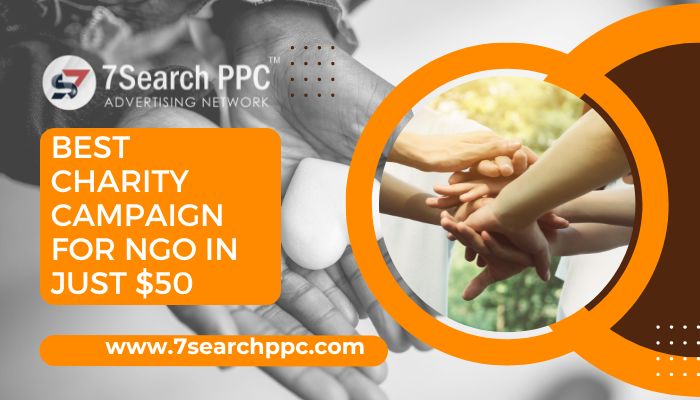Charity campaigns can be used to raise money, spread awareness of a cause, or persuade people to do a certain action. Charities that have a well-defined aim are far more likely to have devoted supporters. However, how can your non-profit advertising strategy reach new consumers in a world when engagement rates are declining? How can compassion weariness be overcome? And how do you actually get someone to do anything once you've caught their attention?

Charity Advertising Tips
We’ve put together our key learnings and techniques from working within the charity sector, providing advice on how to advertise charity effectively.
Define your Objective
First and foremost, it’s crucial to identify what it is you are trying to achieve. Usually we can break this down into a few key areas:
- Awareness (of an issue)
- Awareness (of the charity)
- Fundraising (donations)
- Supporter action (sign-ups or events)
While we know that almost every charity is looking to do all of these at any one time, a campaign is most effective if it has a single minded message. It’s important to give your audience a clear outtake with a tangible and measurable goal.
Define your Audience
Although it may seem apparent, knowing who you want to hear from is essential to your charity campaign's success. Although it may be alluring to focus on "everyone," the most successful charity awareness campaigns achieve their objectives by concentrating on a certain demographic that exhibits comparable habits. For instance, it's possible that you have a very devoted following of women in their 60s and beyond, but you're searching for younger advocates to help you raise awareness.
Understanding your audience's behaviour, the channels they use, and the material they interact with may all be gained through social listening. But the most insightful conversations are frequently had face-to-face; focus groups and surveys are used in primary research to uncover basic human truths that may inform creative direction.
Call to Action
After you have identified your target audience, you must think about the action you want them to do. By incorporating a "Theory Of Change" into your campaign, you may assist your audience understand how their modest actions are contributing to a larger social change. Your audience will be more likely to become engaged if you provide them with an outcome, such as a petition that might lead to legislative change or a mechanism to get in touch with their local Member of Parliament. It's about demonstrating to them that they are capable of doing more than just like or sharing something.
Reframe the Narrative
Engagement and making sure your idea resonates with your target audience depend on relevance. Your campaign is probably out of touch with its audience if it is out of step with the times. Consequently, consider how to capitalise on the zeitgeist. The most creative fundraising initiatives frequently participate in ongoing conversations or forms of cultural expression.
Examining ways to reinterpret well-worn narratives is as crucial to breaking through. What other causes and organisations are saying about the problem? How may the narrative be told differently? Usually, this entails a departure from the more sentimental and "bleaker" charity ad styles; comedy, for instance, may be a powerful instrument in changing people's opinions. To learn more about impactful charity advertising, visit
Best Practices for NGO Advertising
When it comes to NGO advertising, there are several best practices to keep in mind. Crafting compelling storytelling is essential for capturing the attention of potential donors and supporters, while visuals and multimedia can help convey the impact of the organization's work effectively. Additionally, engaging with social media platforms allows NGOs to connect with their audience on a more personal level and cultivate meaningful relationships.
The Role of Technology in Nonprofit Advertising
Technology has completely changed how charitable organisations handle advertising. Through digital platforms, social media marketing, data analytics, and AI-driven insights, technology presents NGOs with a plethora of chances to optimise their advertising endeavours and create maximum effect.
Tips for Choosing the Right Ad Network
NGOs should take into account a number of variables when choosing an ad network for their charitable efforts. Crucial factors to take into account include analysing target demographics, determining cost-effectiveness, and making sure the campaign's objectives are compatible. Nonprofit organisations can more successfully reach their target audience and accomplish their goals by selecting the appropriate ad network.
Conclusion
NGO campaigns play a crucial role in advancing the mission and objectives of nonprofit organizations. By making the most of their advertising initiatives, NGOs can raise awareness about their cause, mobilize support from the community, and ultimately make a meaningful difference in the world.
FAQs
Q1- What are some common mistakes NGOs make in advertising?
Ans- NGOs often struggle to strike the right balance between storytelling and soliciting donations, which can result in campaigns that feel overly promotional.
Q2- How can small nonprofits compete with larger organizations in advertising?
Ans- Small nonprofits can leverage their unique story and grassroots approach to connect with donors on a more personal level, giving them a competitive edge.
Q3- Is it better to focus on online or offline advertising for charity campaigns?
Ans- Both online and offline advertising can be effective for charity campaigns, depending on the target audience and campaign objectives.
Q4- What role does storytelling play in nonprofit advertising?
Ans- Storytelling is essential for capturing the attention and emotion of potential donors, helping them connect with the organization's mission on a deeper level.
Q5- How can NGOs measure the ROI of their advertising efforts?
Ans- NGOs can measure the ROI of their advertising efforts by tracking key metrics such as website traffic, engagement rates, and donation conversions.

No comments yet